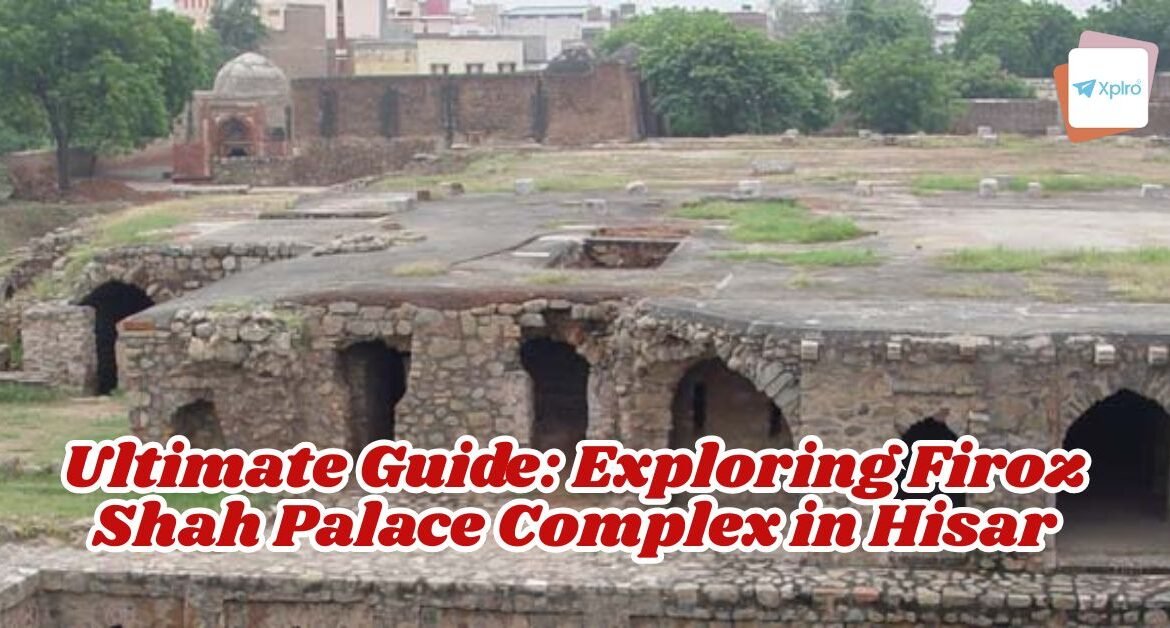Hissar’s heart boasts a jewel – the Firoz Shah Palace Complex. Nestled in the heart of Hisar, the Firoz Shah Palace Complex is a breathtaking 14th-century monument that serves as a captivating window into the Tughlaq dynasty’s legacy. Unlike more crowded historical sites, this lesser-known gem offers a peaceful and immersive experience, allowing you to walk through the very halls where Sultan Firoz Shah Tughlaq once presided. Our guide goes beyond the basic facts to reveal the complex’s unique architectural features, rich history, and the practical details you need for an unforgettable visit.
How to reach:
| Mode | Details | 2025 Tips |
|---|---|---|
| By Road (from Delhi) | 164 km via NH9 – 3–4 hrs drive | Haryana Roadways buses (₹200–300, hourly); Ola/Uber cabs (₹3,000–4,000). New expressway lanes cut delays. |
| By Train | Hisar Junction (HSR) – 5 km from site | Vande Bharat Express from Delhi (2.5 hrs, ₹500 AC); 20+ daily trains. Autos/taxis from station (₹50–100). |
| By Air | Indira Gandhi Intl. (DEL) – 170 km | Flights from major cities (₹2,500+); then train/bus to Hisar. Pre-book airport transfers via Haryana Tourism app. |
| Local | Walkable from bus stand | Cycle rickshaws (₹20) or e-rickshaws for nearby sites. Download Haryana Tourism app for live routes. |
Best time to Visit:
October to March reigns supreme for mild weather (15–25°C) and clear views of the red sandstone arches. Avoid summers’ 40°C scorch; monsoons bring slippery stones.
| Season | Months | Weather | Highlights | Top Activities |
|---|---|---|---|---|
| Winter Bliss | Oct–Mar | 15–25°C, dry & sunny | Ideal for long explorations; 2025 Haryana Heritage Fest (Feb 15–17) with light shows | Guided tours, courtyard photography, evening sound-and-light |
| Spring Vibes | Mar–Apr | 25–35°C, blooming | Vibrant gardens; pre-summer calm | Outdoor picnics, birdwatching in Jindal Park |
| Summer Heat | May–Jun | 35–45°C, humid | Fewer crowds but intense sun | Early morning visits only; focus on shaded museums |
| Monsoon Magic | Jul–Sep | 25–35°C, rainy | Lush greenery; fewer tourists | Indoor artifact viewing; post-rain tunnel spotting |
Attractions:
Firoz Shah Palace Complex:
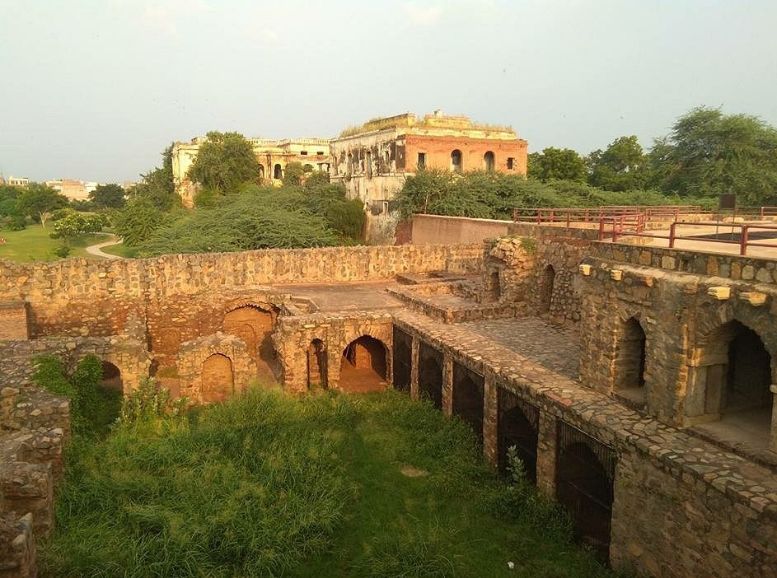
Nestled at the heart of Hissar’s historic complex, the Firoz Shah Palace stands as a stunning testament to 14th-century Tughlaq architecture. Commissioned by Sultan Firoz Shah Tughlaq, this regal structure showcases the dynasty’s signature design elements—sprawling courtyards, intricately carved stonework, and grand halls that once echoed with royal life.
Every corner of the palace reflects the craftsmanship and cultural richness of medieval India, making it a must-visit destination for history enthusiasts and architecture lovers alike.
Baradari Pavilion:
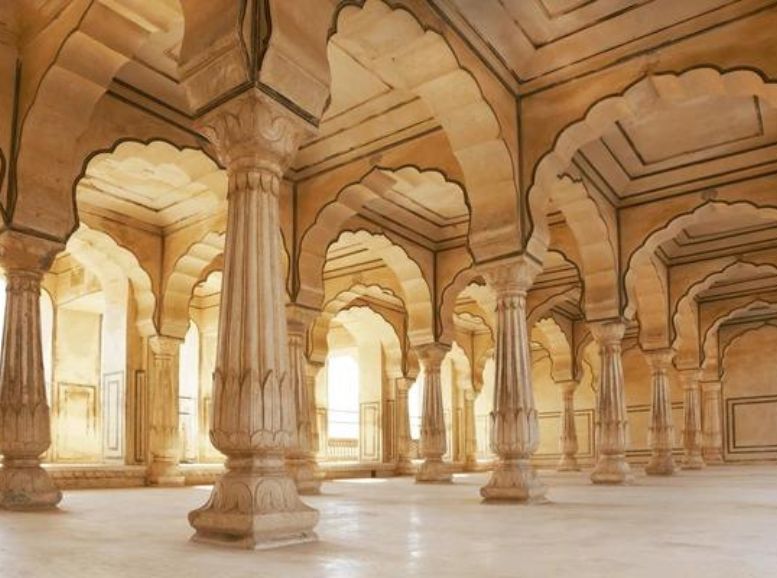
Tucked within the historic grounds of the Firoz Shah Palace Complex, the Baradari Pavilion is a striking example of Mughal-inspired architecture. Named after its twelve elegant arches—‘baradari’ meaning “twelve doors”—this open-air structure offers panoramic views of the surrounding landscape. Once a prestigious venue for royal assemblies and diplomatic meetings, the pavilion now invites visitors to relax, reflect, and soak in the timeless ambiance of Hissar’s regal past.
Jahaj Kothi:
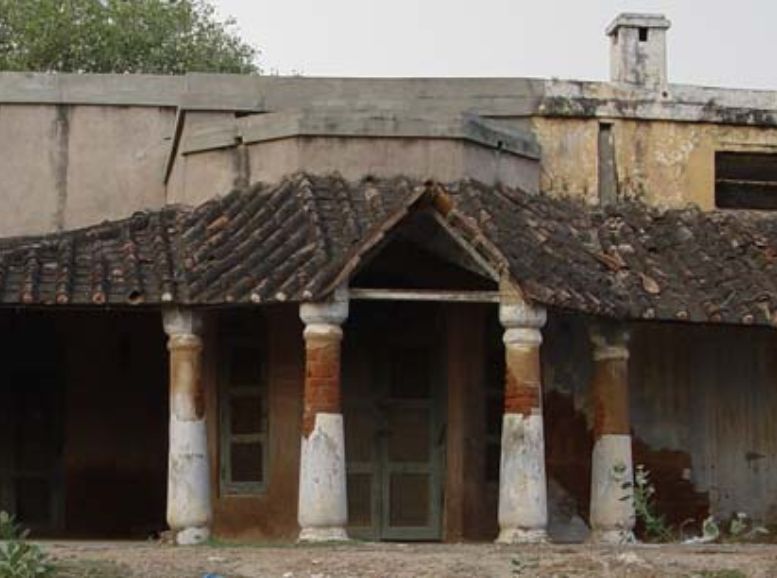
Adjacent to the Firoz Shah Palace Complex, Jahaj Kothi stands as a striking relic of British colonial architecture in Hissar. This 19th-century heritage mansion, known for its ship-like structure and ornate interiors, offers a captivating contrast to the surrounding medieval monuments. Once a residence for British officials, Jahaj Kothi now draws history enthusiasts and architecture admirers alike, providing a rare glimpse into Hissar’s layered past—from Sultanate grandeur to colonial refinement.
Archaeological Museum:
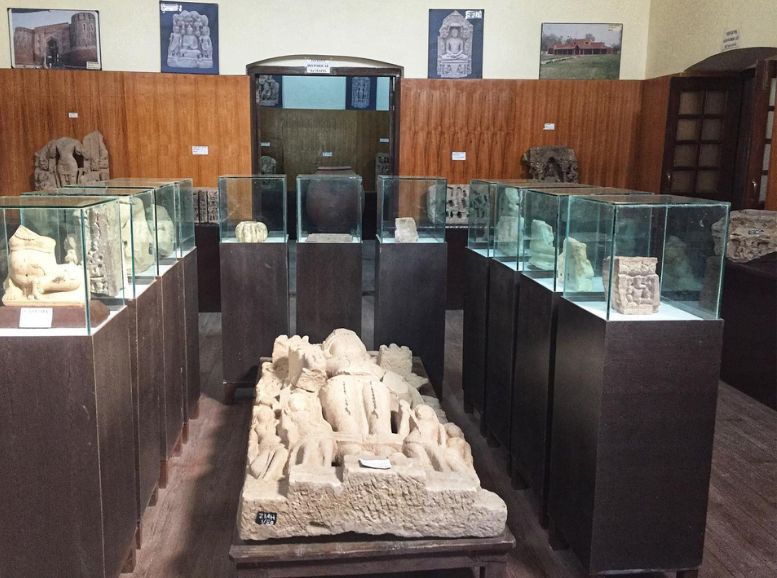
Located within the Firoz Shah Palace Complex, the Archaeological Museum in Hissar showcases a fascinating array of artifacts, sculptures, and relics recovered from regional excavations. Each exhibit reveals layers of the city’s ancient past—from early settlements to medieval dynasties—highlighting the archaeological richness of Haryana.
A must-visit for history enthusiasts and culture seekers, the museum offers an immersive journey through Hissar’s evolving heritage and its role in shaping North India’s historical narrative.
Where to Stay Near Firoz Shah Palace Complex: 2025 Picks
Hisar offers budget heritage stays and modern hotels within 2–5 km. Book via Haryana Tourism for deals.
| Stay | Type | Distance | Xplro Rating | Price/Night (2025) | Booking |
|---|---|---|---|---|---|
| Hotel Brahma | Mid-Range Hotel | 1 km | 4.2/5 (150+) | ₹1,800–2,500 | Book Now |
| Heritage Haveli Hisar | Boutique Heritage | 3 km | 4.5/5 (80+) | ₹2,200–3,000 | Call +91 1662-252-xxx |
| SPM Grand Hotel | Budget Comfort | 0.5 km (near bus stand) | 4.0/5 (200+) | ₹1,200–1,800 | Book Now |
Local experiences:
Cultural Performances
Experience the soul of Hissar through traditional music and dance. Local festivals and cultural events often feature Haryanvi folk songs, energetic dance forms, and storytelling performances that celebrate the region’s heritage. These lively showcases offer a glimpse into Haryana’s artistic spirit and community pride.
Artisan Workshops
Dive into the world of traditional crafts by joining hands-on workshops led by local artisans. Learn pottery techniques, weaving patterns, and embroidery styles passed down through generations. These interactive sessions not only preserve heritage but also connect visitors with the creative heartbeat of Hissar.
Culinary Exploration
Savor the flavors of authentic Haryanvi cuisine at local eateries and street food stalls. Must-try dishes include:
- Kadhi Pakora: Chickpea flour fritters in tangy yogurt gravy
- Kachri ki Sabzi: A rustic lentil and vegetable preparation
- Bajra Roti: Nutritious flatbread made from pearl millet flour Each bite offers a taste of Haryana’s culinary legacy, rich in spices and tradition.
Village Visits
Step into the rhythm of rural life by exploring villages around Hissar. Engage with local communities, participate in agricultural activities, and learn traditional cooking methods. These immersive experiences reveal the customs, hospitality, and everyday stories that define Haryana’s countryside.
Things to notice during your visit:
- Look for Hindu motifs: Pay special attention to the repurposed Hindu and Jain temple pillars in the Lat ki Masjid. You’ll find images of bells, floral patterns, and other symbols that predate the complex itself.
- Trace the tunnels: While many passages are sealed, you can still observe the various corridors and entryways that hint at a larger network of hidden tunnels once used by guards.
- Appreciate the stone: Observe the striking use of red sandstone, sourced from Rajasthan. The material’s consistent color and texture provide a powerful visual identity for the entire complex.
Travel tips:
- Dress comfortably: Hissar can experience hot and humid weather, especially during the summer months (April to June and September to October). Wear lightweight, breathable clothing and comfortable walking shoes to stay cool and comfortable while exploring the palace complex.
- Stay hydrated: Carry a reusable water bottle with you and stay hydrated, especially if visiting the palace complex during the warmer months. Consider bringing snacks or energy bars to keep you fueled throughout your visit.
- Sun protection: Bring sunscreen, sunglasses, and a wide-brimmed hat to protect yourself from the sun’s harsh rays, particularly if you plan to spend extended periods of time outdoors exploring the palace complex and its gardens.
- Respect the culture: When visiting the Firoz Shah Palace Complex, be respectful of local customs and traditions. Dress modestly, especially if entering religious sites within the palace complex, and refrain from any behavior that may be considered disrespectful.
- Keep your belongings safe: While exploring the palace complex, keep your belongings secure at all times. Consider using a crossbody bag or money belt to carry valuables, and be mindful of your surroundings, especially in crowded areas.
- Safety first: Observe any safety guidelines or rules provided by the staff at the palace complex, particularly when climbing stairs or exploring elevated areas. Be cautious when walking on uneven surfaces or near historical structures.
Conclusion
Bidding farewell to the Firoz Shah Palace Complex in Hissar, we depart enthralled by its awe-inspiring architecture and profound historical legacy, a true embodiment of eras long past. As we wandered its corridors and courtyards, we were swept back in time, embraced by the narratives whispered by Hissar’s royal past. The complex extends far beyond its architectural marvels, serving as a portal to the region’s vibrant culture and traditions, from savoring delectable local fare to participating in lively festivals.
Leaving this historical treasure, we carry with us not only memories but a newfound appreciation for Hissar’s heritage, enriching our understanding of the stories that weave together our shared history. To embark on a deeper exploration of Hissar’s wonders, visit Xplro.com, your trusted companion for crafting unique tours and experiences.
FAQ
- What is the historical background of the Firoz Shah Palace Complex?
- The Firoz Shah Palace Complex, also known as Hisar-e-Firoza, was erected during the rule of Sultan Firoz Shah Tughlaq in the 14th century. It served as a seat of governance and a residence for the royal family during the Tughlaq dynasty’s reign.
- What are the main attractions within the Firoz Shah Palace Complex?
- The primary attractions within the palace complex include the Firoz Shah Palace itself, the Baradari Pavilion, Sheesh Mahal (Palace of Mirrors), lush gardens, and courtyards, along with the neighboring Jahaj Kothi.
- How can I reach the Firoz Shah Palace Complex in Hissar?
- The palace complex is conveniently accessible by road, rail, and air. Hissar is well-connected to major cities in Haryana and nearby states, with local transportation options available to reach the site.
- What are the operating hours of the Firoz Shah Palace Complex?
- The palace complex generally welcomes visitors during daylight hours, but specific timings may vary. It’s advisable to verify the current opening hours before planning your visit.
- Is there an entrance fee to explore the Firoz Shah Palace Complex?
- Yes, there may be a nominal admission fee to enter the palace complex. The fee structure often differs for domestic and international visitors and contributes to the maintenance of the historical site.
- Can I participate in guided tours of the Firoz Shah Palace Complex?
- Absolutely! Guided tours are commonly available at the palace complex, offering valuable insights into its historical significance, architectural features, and cultural importance. Opting for a guided tour enhances the overall experience.
- Am I permitted to take photographs inside the Firoz Shah Palace Complex?
- Yes, visitors are generally allowed to capture photographs for personal use within the palace complex. However, it’s recommended to respect any specific guidelines or restrictions regarding photography.
- Is the Firoz Shah Palace Complex accessible to individuals with mobility issues?
- Efforts are made to ensure accessibility within the palace complex, although some areas may have limited access due to historical architecture. Visitors with mobility concerns are encouraged to inquire about accommodations in advance.
- Are restroom facilities available within the Firoz Shah Palace Complex?
- Yes, restroom facilities are typically provided within or in close proximity to the palace complex for the convenience of visitors.
- Can I bring outside food or beverages into the Firoz Shah Palace Complex?
- Generally, outside food and drinks may not be permitted within the palace complex. However, designated areas or nearby eateries may offer refreshments for visitors.
- Is the Firoz Shah Palace Complex suitable for families with children?
- Absolutely! The palace complex caters to visitors of all ages, including families with children. However, parental supervision may be necessary, especially in areas with uneven terrain or delicate structures.
- What safety precautions should I observe while exploring the Firoz Shah Palace Complex?
- While visiting the palace complex, it’s advisable to adhere to safety guidelines, such as refraining from climbing on fragile structures, staying within designated areas, and keeping personal belongings secure at all times.




